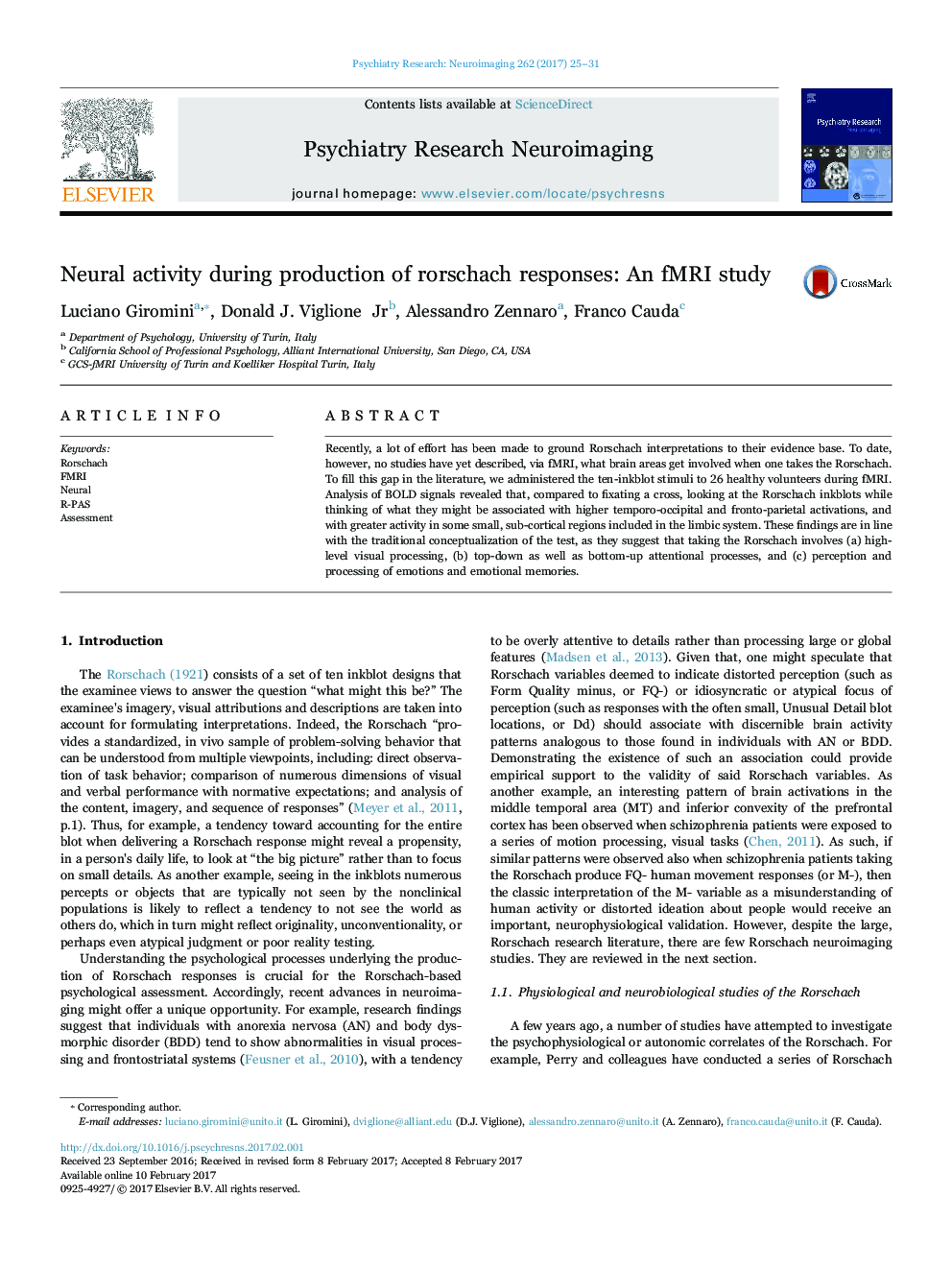| Article ID | Journal | Published Year | Pages | File Type |
|---|---|---|---|---|
| 4933975 | Psychiatry Research: Neuroimaging | 2017 | 7 Pages |
Abstract
Recently, a lot of effort has been made to ground Rorschach interpretations to their evidence base. To date, however, no studies have yet described, via fMRI, what brain areas get involved when one takes the Rorschach. To fill this gap in the literature, we administered the ten-inkblot stimuli to 26 healthy volunteers during fMRI. Analysis of BOLD signals revealed that, compared to fixating a cross, looking at the Rorschach inkblots while thinking of what they might be associated with higher temporo-occipital and fronto-parietal activations, and with greater activity in some small, sub-cortical regions included in the limbic system. These findings are in line with the traditional conceptualization of the test, as they suggest that taking the Rorschach involves (a) high-level visual processing, (b) top-down as well as bottom-up attentional processes, and (c) perception and processing of emotions and emotional memories.
Keywords
Related Topics
Life Sciences
Neuroscience
Biological Psychiatry
Authors
Luciano Giromini, Donald J. Jr, Alessandro Zennaro, Franco Cauda,
